
This is my fourth annual iteration of this post (you can find 2017’s here, 2016’s here, and 2015’s here). Like a lot of people, I track all of my reading at Goodreads, a site that almost certainly exists for the sole purpose of recommending Michael Chabon novels.
—
I read 35 titles in 2018. That’s 25 fewer than last year’s tally and 11 fewer than the previous year.
Thoughts on this data:
-I completed one book the entire time Anna and I were living abroad (mid-September through mid-December). The only defense I can muster is that the primary purpose of reading is to broaden one’s knowledge/empathy via literary connections, and while on our trip we were accomplishing that goal through different channels.
-In the middle third of 2018, I pushed myself to read a lot of books that had been taking up room on my shelf, many having settled there after being plucked from a lending library or purchased at a used bookstore. The cross-country move necessitated a purging of titles that weren’t making the trip.
-It wasn’t a banner year as concerns the quality of the books. I began 2018 reading books I was really excited to get into. I spent the rest of the year reading things about which I was less fervent. I anticipate reading a lot more in 2019 and working harder to pick out titles I think I’ll enjoy more. Life’s too short to voluntarily do things that don’t make you happy.
Here are some stats:
Number of Graphic Novels: 6 (17%)
Number of Audiobooks: 7 (20%)
Number of Female Authors: 14 (40%)
Number of Books from the DC or Juneau Library: 10 (29%)
Number of Non-Fiction Books: 11 (31%)
A quick trends summary:
-Graphic novels, audiobooks, non-fiction, and library books represented smaller pieces of the overall pie this year than last. It was a year of novels (69% (nice)). I read the same percentage of women authors in 2018 as I did in 2017 — 40%. It’s not straight-up equality but it’s satisfactory.
-In 2017 I read every single page of the New York Times Book Review from January to December. I did not accomplish the same in 2018, so I felt much less engaged with the literary world as a whole. I’m hopeful I can get back into that once life stabilizes a bit.
-In 2019 I anticipate reading a whole lot more library books, which is something I’m again looking forward to.
—
Below you’ll find all the titles I consumed this year, plus blurbage. I’ve ranked them in order of enjoyability rather than adhering to some strict literary merit criteria.
This year I’ve once again split the list into two: graphic novels and everything else. The former list comes first, then the latter.
I’ve also linked to where you can purchase each title from a reputable independent bookseller.
All the Graphic Novels I Read in 2018
1. Blankets by Craig Thompson (2003)

I thought this was really terrific. Thompson’s autobiographical graphic novel takes advantage of all the distinct storytelling tools that elevate the form: pacing (via beautiful illustrations that allow the story to breathe), subtle details in background images, vivid glimpses into characters’ minds, wordless sequences, memory scenes & flashbacks, and the melding of the real with the fantastical all in the same image panel. It’s a delight to read and, despite its girth (nearly 600 pages), I finished it in one sitting.
The story follows the author’s coming-of-age process during his teen years, in particular via his first love and the slow decay of his religious fervor. Craig’s relationship with god and Christianity is beautifully tracked, as the rural youngster who knows nothing other than the fear of God is slowly exposed to the contradictions and exceptions protruding from the dogma. The most memorable and moving sections involve Craig’s guilt from being a lousy older brother (and his redemption) as well as his romance with his first love, a girl he meets at Jesus Camp named Raina.
Craig visits Raina’s family for a couple of weeks and the home life Thompson paints for them is shattering and sad: mom wants a divorce, dad is fighting for the family, two of her siblings are mentally handicapped, her older sister is married to a jerk who routinely enlists Raina for babysitting duties. Craig’s observations reveal Raina as a strong but broken character who teaches him about commitment and exposes him to the thrilling feelings of falling in love… the yearning to touch her hair, the dreaming toward the future, the thrill of feeling responsible for another person.
I won’t spoil the end but it turns out okay for Craig (this is hiscoming-of-age after all), yet the completion of Raina’s story is unsatisfying and my biggest regret. I’ve not often felt such pangs on completing a book. It’s a powerful feeling to have become so invested in a character and her family, all in one night. It’s why I love this sort of storytelling and why I love this book.
2. Embroideries by Marjane Satrapi (2003)

Marjane Satrapi is most famous for Persepolis, about her childhood in Iran and her decision to move to Europe in her teens. Embroideries is of that world, a spin-off memoir of sorts, and a quick read at fewer than 150 pages. The setting is a get-together hosted at Satrapi’s grandmother’s house in the 1990s attended by the author, her mother, and several friends. The women drink tea and gossip. Each woman shares a story about sexuality, virginity, marriage, divorce, and/or body image. The stories come together as a commentary on social norms in Iran, a country where what’s considered “acceptable behavior for women” has oscillated over the past half-century. You can think of this short book as a feminist glimpse into the sex lives of women in Tehran.
3. Templar by Jordan Mechner (ill. LeUyen Pham & Alex Puvilland) (2013)

It lacks the narrative/character depth of the genre’s more substantial titles, but Jordan Mechner’s labor of love shines in this creative presentation of the fall of the Knights Templar. The story follows one of these knights who manages to avoid capture during a massive purge of the order. He leads a group of fellow escapees and various ne’erdowells in a thrilling heist of buried treasure, all while reconnecting with a lost love.
There were times in reading this massive book that I wish I was getting some of the stylistic flourishes of someone like Alan Moore, who always seems to inject massive degrees of gravitas into works like this. But Mechner comes at comics from the perspective of a game designer (he’s the guy behind Prince of Persia), and there’s definitely a fantasy-adventure feel to the presentation that isn’t wholly unwelcome.
4. The Sculptor by Scott McCloud (2015)
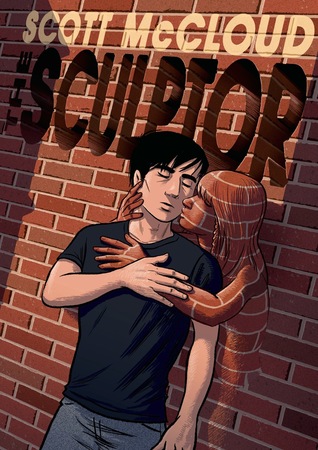
A real tour de force of a work that is both intelligent and elegantly wrought, though ultimately held back by a thoroughly unlikable protagonist whose goals and the pursuit thereof are undeservedly portrayed as noble. If you’re sick of stories about broken losers rescued by fever-dream pixie girls, I’d recommend staying far away. That aside, the art is gorgeous and the plot/pacing will keep you rapt. It’s an enjoyable but flawed book, a thrilling story with a suspect message.
5. Batman: The Killing Joke by Alan Moore & Brian Bolland (1988)
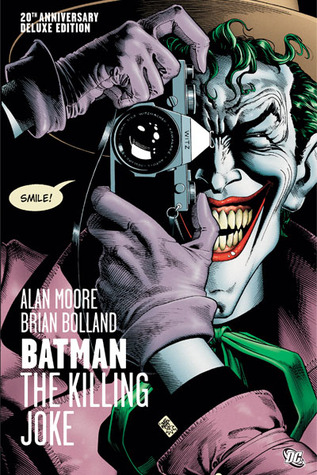
Dark, bleak, very late ’80s DC. My issue with it is probably more about the fact that I don’t really like superhero comics that much, though one cannot deny the talent and craft that goes into constructing a work like this. There’s some interesting stuff here about the Joker and Batman being foils of each other, each an embodiment of a reaction to deep-seated grief. I’m not sure it does anything aside from torture and hurt some characters while investigating the origins of others. Still, its cultural influence is considerable and that makes it worthy of a read.
6. Emo Boy Volume 1: Nobody Cares about Anything Anyway, So Why Don’t We All Just Die? by Stephen Emond (2006)

I thought this might be fun, cheeky graphic novel but it’s hard to follow and all over the place tone-wise. That makes it difficult to grasp the point, if there even was a point to begin with. There’s at least some nice commentary on one of emo’s primary flaws: self-loathing that’s entirely self-serving.
All the Other (Fiction/Non-Fiction) Books I Read in 2018
1. Lincoln in the Bardo by George Saunders (Hardcover) (2017)

Wildly original, experimental, avant-garde yet approachable. While technically a novel, the story is told through quoted historical sources (some of them made up by the author) and sections of stream-of-consciousness dialogue that resemble an oral history. With this odd and playful format, Saunders manages to find new and unique ways to explore long-trod topics such as death, legacy, grief, and empathy.
The story centers on the 1862 death of Willie Lincoln, the 11-year-old son of Abraham, and the subsequent sorrow that propels the president to pay a midnight visit to the boy’s temporary tomb in a Georgetown graveyard. The majority of this novel’s bevy of characters are stubborn spirits held in a purgatorial limbo, grappling with their interpretations of their lives and the frustration of being useless to and forgotten by those still inhabiting corporeal forms.
It’s a brilliant, beautiful work of humanism by an author who frequently discovers fresh new ways to tell a story.
2. Tenth of December by George Saunders (Paperback) (2013)

This award-winning short story collection was my first Saunders, read at the top of the year on the advice of my friend A.C. It becomes clear within the first few stories that the guy is a master of the form. He does clever things with language and cadence. He writes convincingly on topics like social class and unfulfilled potential. He gives voice to the luckless and the left-behind. He excels at withholding information, piecing it out to the reader at just the right rate.
Some of these stories rake you over the coals. Others tickle your thinking muscles. There is an observed balance between the joy gained from the stories themselves and the joy gained from the sleight-of-hand craftsmanship. Saunders doesn’t melt away from the work. Instead, it’s like he’s always off to the side behind a curtain, his presence felt but the spectacle maintained. Highlights include: “Escape from Spiderhead,” “Home,” “Puppy,” “The Semplica Girl Diaries,” and “Tenth of December.”
3. Where’d You Go, Bernadette? by Maria Semple (Paperback) (2012)

I obtained this novel from a Little Lending Library in 2016 but allowed it to sit on the shelf a couple of years before reading. I had no idea what I was missing.
This funny and clever novel is told from the perspective of a daughter whose eccentric mother has disappeared. Most of the early chapters are composed of documents and e-mails acquired by the daughter in order to construct a narrative of who her mom was and why she may have run off. It sounds like a downer but the tone is always amusing, especially in how our understanding of a situation is inaccurately painted by gossip and hearsay.
The novel’s best sequence covers Bernadette’s feud with a pair of persnickety moms from her daughter’s school. It’s satisfying to watch this group of subtle narcissists (though Semple never denies a character their humanity) react to the accidental chaos created by their acrid quarrels. The ways in which characters react and change in the face of consequences is also rewarding.
Where’d You Go, Bernadette? is a charming family dramedy with a whirlwind plot filled with dynamic characters who frequently build wavering alliances. The barb-filled dialogue and mysterious backstories keep the pages turning (I stormed through the book in two days). It’s not going to change your life but not every book needs to. I guarantee it will entertain you and for that reason I highly recommend it.
4. The Brief Wondrous Life of Oscar Wao by Junot Díaz (Paperback) (2007)
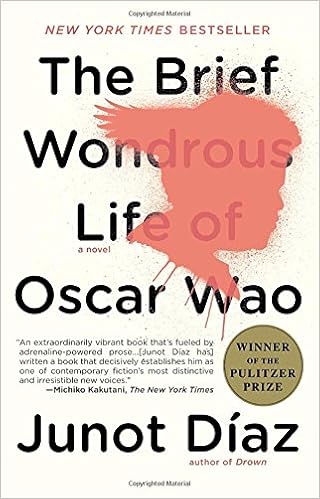
Vibrant, electric, eminently readable. Díaz’s prose is intoxicating. I couldn’t stop reading, flipping page to page in the dead of night, eager to see what surprising description or slick turn of phrase would greet me. The book tells the story of several generations of a Dominican family with a particular focus on Oscar, the nerdy and obese grandson who suffers through many curses he has inherited: toxic masculinity, rigid stubbornness, and a family jinx he will never be able to outrun.
There are parts of the book that I couldn’t get behind, mostly with the frustrating character of Oscar. But the novel’s strengths are numerous, from the meta-frame of our narrator (Yunior, the Watcher) to the seamless generational transitions from chapter to chapter. It’s a terrific book, a real & honest piece of Latin American literature, and a lasting testament to Díaz’s impressive talents.
That leads to this regrettable coda: A few authors on this list and from years past were exposed in the #MeToo movement, including Díaz. I read and reviewed Oscar Wao before the news about him broke. It’s a shame that men like him and Sherman Alexie (more on him later), who have respectively been literary torch bearers for Dominicans and American Indians, have tarnished themselves (and, by extent, their work).
5. The Greatest Slump of All Time by David Carkeet (Hardcover) (1984)

An engaging comic novel about the starting 9 of a baseball team who play out a season in which they all suffer from clinical depression. The book is ostensibly about a ballclub that manages to win despite the misery of its constituent parts, but the real meat of the story is the different manifestations of the players’ depression and how they each try to combat it. It’s a clever book about the many different claws of depression, smartly disguised as a funny story about America’s pastime. The baseball parts — especially descriptions of a sociopathic second baseman — are amusing and well-woven into the story.
6. Shockaholic by Carrie Fisher (Audiobook) (2011)

This rounds out all the Fisher memoirs for me. My ranking: 1. Wishful Drinking, 2. Shockaholic, 3. The Princess Diarist. I think that’s also the order in which they should be read or, better yet, listened to, since Fisher is a tremendous reader of her own work.
Shockaholic covers the late actress’ positive experience with shock therapy and features terrific anecdotes about such luminaries as Elizabeth Taylor, Michael Jackson, and a boorish Ted Kennedy. I most enjoyed the chapter about Carrie’s addled and enigmatic father, the crooner Eddie Fisher, who was more invested in doing speed and laying broads than being part of his children’s lives. The story about how Carrie and Eddie bury the hatchet is both heartwarming and sad.
The writing is classic Carrie: self-effacing and razor-sharp, packed with clever aphorisms and observational asides. Her trademark wit and playful language highlight this funny and often tender glimpse into the absurd nature of performance and fame.
7. Satchel: The Life and Times of an American Legend by Larry Tye (Audiobook) (2009)

Satchel Paige is probably one of the five or ten best pitchers of all time, but few baseball fans would name him if asked to list their historical greats. That’s because Paige spent the vast majority of his career playing in relative anonymity in the Negro Leagues, where myth and apocrypha often take the place of empirical reports and statistics. This comprehensive biography paints a colorful portrait of the legendary Paige, a man who was not without his flaws, but who demonstrated time and again what it meant to be larger than life.
8. Beasts of No Nation by Uzodinma Iweala (Paperback) (2005)

Iweala channels the great Chinua Achebe in this harrowing novel about Agu, a West African boy recruited by a guerilla force. The story is told from Agu’s perspective in a pidgin English that conveys the tension and horror of war through the eyes of a child participant. Through abuse and coercion, Agu commits terrible acts that he attempts to mentally separate from his pre-war humanity. The most memorable passages in this powerful novel involve Agu’s attempts through simple logic to rationalize his goodness from the soldier’s life he has been forced into. It’s not an easy book to stomach and I found myself reading quickly through brutal scenes to get them over with, but the power it possesses is an impressive achievement for a first-time author.
9. The Best Team Money Can Buy by Molly Knight (Hardcover) (2015)

I was a big fan of Molly Knight’s reporting for ESPN during the Los Angeles Dodgers’ most fraught period, the McCourt era, in which the teams owners’ nasty divorce resulted in the club plunging into bankruptcy in 2011. When Knight announced that her first book would cover this strange saga (as well as the subsequent rescue and rebuild by the new ownership group), I pre-ordered immediately. This was in 2015.
After reading the first 100 pages, I realized these events were too fresh in my mind, the wounds still raw. I shelved it, electing to put some calendar distance between myself and the early years of this decade.
In October 2017 the Dodgers reached the World Series for the first time in my life. They didn’t win, but the experience was like the crest of a long-forming wave of my baseball fandom. I’ve grown a lot in the past several years, and much of that growth has been in the opposite direction of the tribalistic silliness of sports fandom. I understand now what I didn’t in my early 20’s: My happiness need not be dependant on the performance of twenty-five jocks dressed in blue and white pajamas.
It’s with this mindset that I reapproached this read. I enjoyed the nostalgia factor of reacquaintance with players like A.J. Ellis, Juan Uribe, Zack Greinke, and the young Yasiel Puig. I liked getting a behind-the-scenes glimpse at the interpersonal tension brewing beneath the surface. I felt I could relive the many disappointing defeats without channeling past feelings of unhappiness and sorrow. I’m a more analytical, clinical reader because I’m a more analytical, clinical sports fan.
The stories and the characters in this book are fascinating to me as a Dodgers fan. Whether they and the Dodgers’ plight would be of considerable interest to others, I’m not so sure. But I appreciate Knight’s insightful, caring approach because she gives everyone (or at least everyone who deserves it) a fair shake. She seeks to get to the root of psyches and behaviors, to reveal the footsteps that brought each player to the present moment. There’s an intriguing investigation of the fragility of major athletes’ egos; it’s not alway easy being the best.
T.B.T.M.C.B. is a cherished piece of sports writing mostly because of my emotional connection to the subject, if that makes sense. I benefited from the years away from the book and the reflective perspective I brought to picking it up again. Baseball and the Dodgers have long served as a vehicle for recreation, reflection, and distraction in my life. I’m grateful for that, as well as the ability to see it for what it really is.
10. Improvement by Joan Silber (Hardcover) (2017)

An enjoyable read about interconnected lives and how your actions or inactions can have far-ranging consequences for people you don’t even know.
Silber’s prose reads at a brisk pace; it never droops or plods. She structures the book in a way that allows us the opportunity to get to know an eclectic cast of characters. There’s a lot of delightful dramatic irony as characters come and go throughout the story.
It’s a clever thing how simply the book reads (it’s neither long or complicated) but the more I think about it, the more I realize what was bubbling beneath the surface.
11. Das Reboot: How German Football Reinvented Itself and Conquered the World by Raphael Honigstein (E-Book) (2015)

Really terrific. I’m amazed how Honigstein manages to pack so much into this book. He highlights each of the essential characters, explores the process by which German football underwent its major reconstruction, and utilizes a nonlinear means of narrative to link all sorts of different threads to the core story. I can only imagine what his outlining must have looked like.
Perhaps most interesting to me was the ways in which conservative traditionalists attempted to sabotage the reformers every step of the way, but how these people with new methods and ideas managed to overcome that inertia to drag an obdurate nation into the 21st century. Sports can be relatively low stakes, but they have the ability to teach us lessons that can be transmuted into a plan for spurring radical change in higher stakes arenas: government, communities, etc. It’s a fascinating blueprint.
12. One Day We’ll All Be Dead and None of This Will Matter: Essays by Scaachi Koul (Audiobook) (2017)

I thought this was really great — personal essays from a person with interesting life experience. Koul writes about being the daughter of Indian immigrants and, as someone who doesn’t speak her parents’ first language, how she lives on the periphery of two worlds. She also has plenty of insightful things to say about body image, sexual assault, and online harassment. Her humor is dry and cutting, and the book’s emotional core elicits strong feelings of humanist empathy.
13. Lafayette in the Somewhat United States by Sarah Vowell (Audiobook) (2015)

I enjoy listening to Sarah Vowell’s works on audiobook. Her histories often feature a cast of fun, familiar readers who bring life to the many eccentric characters populating her books. This such book is a charming look at the American Revolution through the lens of the Marquis de Lafayette, who arrived on American shores as a teenager with (delusional) dreams of glory. But like with many great stories, delusion soon gives way to great success. Vowell infuses the book with her trademark irreverence and wit, which makes it an all-around great way to learn and be entertained.
14. Endurance: Shackleton’s Incredible Voyage by Alfred Lansing (Audiobook) (1959)

I listened to this riveting history of the doomed Antarctic voyage on audiobook and highly recommend that avenue. There’s something about hearing the survivors’ accounts that transports you to the belly of a great ship, caught in the ice and succumbing to the pressure, thousands of miles from civilization. Alfred Lansing’s triumph is sixty years old this year, but still reads with the pace and gravity of a modern work.
15. The White Tiger by Aravind Adiga (Paperback)(2008)
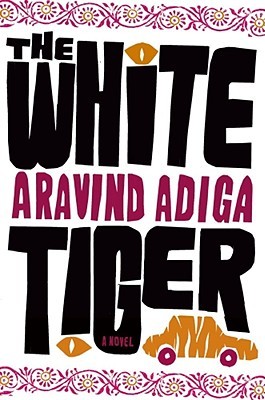
Aravind Adiga’s grim and gnashing portrait of India’s worst injustices is an intoxicating read thanks to the narration of its charismatic protagonist, Balram Halwai.
Adiga frames the novel around Balram’s telling of his life story. He is a successful entrepreneur, having risen from nothing and escaped a going-nowhere village life. But Balram makes it very clear that his path to success is marked with blood and deceit. In fact, he revels in it, revealing with glee how far he’s come on his wits and guts alone. As a reader, you’ll frequently question Balram’s perspective — he’s a bit of a sociopath and just not a very nice guy — but you come to begrudgingly respect him for seeing the forest beyond the trees.
The book won a bunch of awards when it came out a decade ago and some critics compared it to Ralph Ellison’s “Invisible Man,” which is apt though Ellison’s masterpiece is more weighty and elegant. Still, it’s a fascinating glimpse into the mind of a man who has (or thinks he has) figured out the rules of society and has elected not to abide by them.
16. The Lone Ranger and Tonto Fistfight in Heaven by Sherman Alexie (1993)

This reads very much like a collection of stories by a promising young writer searching for his best voice, which is exactly what it was when it was published 25 years ago. Some of the stories straddle that classic Alexie line of humor and pain. Others don’t quite get there, but there’s plenty of stuff here to stoke an emotional response and cause one to think about privilege through the lens of those who are almost wholly without it.
I was 2/3 done with this book when the news of Alexie’s history of sexual harassment hit the news. It was interesting to experience such a perception shift in how I read the book. In particular, I began seeking out clues of Alexie’s indiscretions where I hadn’t been before, perhaps overanalyzing every female character and the ways he wrote about sex. As I said above, it’s a shame that Alexie, a man who possesses a keen gift for writing with empathy and feeling, hasn’t demonstrated those values in his personal life.
17. Astrophysics for People in a Hurry by Neil DeGrasse Tyson (Audiobook) (2017)

A charming and approachable read. Tyson’s brand of space-focused sermonizing has become a bit of a clichéd meme, but it’s fundamentally built on a positive platform: amazed wonder. It’s with that foundation that Tyson writes (and, in the audiobook, narrates) this little introduction to the big universe. I have to admit that I can’t remember much of what I learned, so perhaps Astrophysics… is more like a distant university lecture than a great way to really get a grasp on things, but it could just be because my audiobook-listening habits don’t really lend themselves to active listening. Either way, take notes if you want to remember anything about dark matter.
18. Jesus and Billy Are Off to Barcelona by Deirdre Purcell (Paperback) (2008)

An engaging short novella with brilliantly simple plotting that manages to say a lot about class and growing up in modern Ireland. I spent time this past year thinking about the sorts of literary elements I really enjoy, and this book has a lot of them. An eclectic cast of characters. Fun narrative framing (Purcell introduces characters and situations like she’s about to play them out using toys in a doll house). Plots built upon mix-ups and misunderstandings. It’s an effective formula for a literary world worth spending time in.
19. Hombre by Elmore Leonard (Paperback) (1961)

This one’s a decent western about the aftermath of a stagecoach robbery, a solid thriller from one of the mid-century’s most prolific writers of pulp fiction. The narrator is a young employee of the stagecoach company who recounts how the title character, a mysterious half-Apache, leads a group of survivors to safety after the robbery. There’s some nice elements here about how Russell, the titular hombre, deals with the prejudice rained upon him for being American Indian.
20. Desperate Characters by Paula Fox (1970)

I came to this beautifully written novel on the recommendation of a fictional character, the narrator of Caroline Kepnes’ You, which is about a murderous bookstore employee whose favorite author happens to be Paula Fox. There’s less bookstore murder here, as Fox’s rich descriptions paint a stolid depiction of a 40-something couple in the late ’60s grappling with the creeping meaninglessness of their lives. It’s not really my favorite kind of novel with not much going on plot-wise, but I’m still glad I read it.
21. Jernigan by David Gates (Paperback) (1991)

When this book came out in 1991, many of the reviews compared its eponymous narrator with Holden Caulfield. There’s some truth to that connection; Peter Jernigan is just as disaffected and fed up, though his additional years point not to youthful indiscretion, but instead to the fact that he’s a rotten person. Gates’ trick is taking this unlikable lout, driving him to the edge of alcoholic nihilism, and somehow instilling in him a voice that is engaging enough for us to stick with him.
The book’s reliance on contemporary references and its stiff position within the zeitgeist of 1988 means it hasn’t aged as gracefully as some other novels. Jernigan is the type of character who is not currently in vogue; his sarcastic self-sabotage and piss-poor parenting don’t quite lend themselves to sympathy. But as a novel of its time about the soullessness of just existing without purpose of direction, it’s a fascinating read.
22. Christmas: An Autobiography by Judith Flanders (2017)

A clever (though not tremendously memorable) glimpse into the history of the holiday, filled to the brim with insightful observations and chestnuts of trivia. You get the origins of Santa Claus, Christmas trees, ornaments, advent calendars, and the oddly comforting fact that people were first complaining about the commercialization of Christmas over 500 years ago.
23. Headbanger by Hugo Hamilton (2001)

This Irish crime novel stars a wild and delusional cop who goes on a vigilante streak against a Dublin mobster. It’s an entertaining read flavored with Hamilton’s vivid (and scathing) depiction of Irish culture/society in the ’90s.
Coyne, the anti-hero cop, is a very interesting character, an overreaching lughead who’s probably watched way too many action movies. Hamilton writes that Coyne sees himself as always performing for an audience, something that’s both narcissistic and a bit relatable (we’re all at some level the center of our own universes). Coyne is a Travis Bickle type who has lost faith in the system and wants to be the hero to rectify things, despite not being qualified to carry that mantle.
Headbanger is a worthy read solely as an examination of the Coyne character. There are plots, subplots, and other crime novel elements that aren’t all that special. But there’s very obviously something bigger than all that going on between the covers, and it’s both intriguing and provocative.
24. The Bedlam Stacks by Natasha Pulley (Paperback) (2017)

This cleverly constructed historical adventure novel follows a former East India Co. smuggler who gets plucked out of a forced retirement and sent to darkest Peru in pursuit of quinine. Merrick Tremayne’s family has connections to the region — his grandfather befriended the natives of a mysterious village called New Bethlehem — and the journey reveals much more to Tremayne than he expected to find.
There’s a lot to like about the plot and setup, especially because Pulley wrote the book after an immersive study of Peru and Quechua culture. There’s also an element of magical realism that’s quite enchanting. But the novel really suffers in its second half due to slow pacing and insanely frustrating character logic issues. I also feel like Pulley had an image of this world in her mind but struggled to effectively describe it, resulting in a feeling of distance between author intention and reader experience.
25. Matchstick Men: A Novel about Grifters with Issues by Eric Garcia (Paperback) (2002)

This one’s a novel about con men that was adapted into a film (that I haven’t seen) starring Nicolas Cage and Sam Rockwell. There’s a point less than halfway through the book where the author recklessly telegraphs the twist ending, which is a real bummer because it kneecaps the novel’s main conceit. You end up ten steps ahead of a main character who is presented as a brilliant grifter always ten steps ahead of everyone else. There are some fun cons and memorable moments early in the book, but plot holes and faulty storytelling make the second half a mess.
26. 1.3 Billion: A Footballing Revolution in the Making by Shiv Jhangiani (E-Book) (2017)

A solid crash course on the state of football in the world’s second most populous nation. This e-book is not without its flaws: it can be digressive and sometimes reads a bit too much like the author’s cover letter rather than an in-depth investigation. But if you want to learn where Indian football is and where it could be going, there’s hardly a better text out there.
27. Today Will Be Different by Maria Semple (Hardcover) (2016)
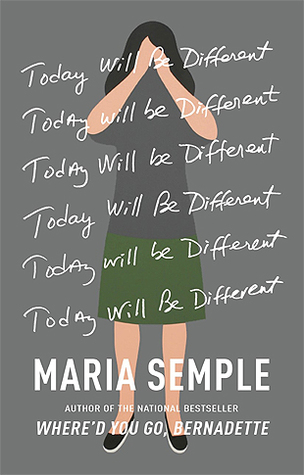
I enjoy Semple’s writing so much that I can still find lots to like in a novel as flawed as this one. I think there’s one-third of a terrific book here… perhaps another rewrite or a more fervent editor could have remedied the rest. The plot is quite similar to Where’d You Go, Bernadette? — overwhelmed Seattle housewife struggles with her day-to-day life, distant husband, and precocious child — which is a bit concerning and makes you wonder if Semple lacks different arrows in her quiver. The story is buoyed by some playful scenes and whiffs of cunning narration, but there are also some characters and situations that are bizarrely wrought. The result feels like a misfire.
28. Housekeeping by Marilynne Robinson (Paperback) (1980)
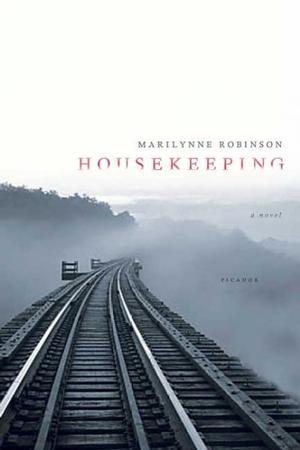
This one might be controversial, as Robinson is a beloved author and Housekeeping is often regarded as the masterpiece that’s better than her more famous works. But this novel just wasn’t for me.
Two orphan sisters are sent to live with a succession of aloof relatives in small town Idaho. The last of these relatives is a drifter aunt whose oddball habits form a wedge between the formerly inseparable siblings. The book is an investigation of what it means to keep a house, both in terms of cleanliness and familial structure.
My main gripe is with Robinson’s prose, which is far too florid. Her bountiful descriptions constantly stumble into and over each other, leading to a clunky reading experience. Small moments of insight and beauty are few and far between. I didn’t engage with the characters and couldn’t muster much interest in the plight of the two sisters at the heart of the story. It’s probably a case of me as a reader not getting it, but it might also just be that Marilynne Robinson is not for me.
29. We Are Never Meeting in Real Life: Essays by Samantha Irby (Audiobook) (2017)

There’s a certain point where humorous self-loathing edges away from “admirable, vulnerable self-examination” and toward “I’m not a likeable person and I know it, come see what I mean.” There’s a way to make the latter work but it requires a finesse and precision that Irby lacks. The book features some truly moving and funny moments, but they aren’t enough of a counterbalance to all the tiring rest.
—
And there you have it.
R